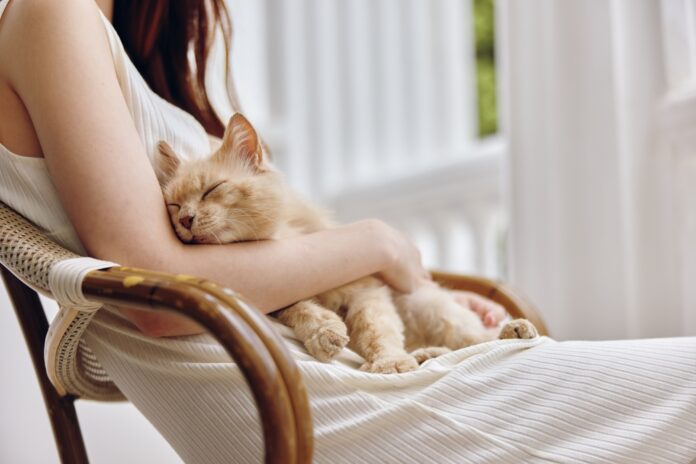Where to put your cat’s “stuff”

We all know that cats can be particular, but did you know that his happiness and well-being can be affected by where you position his bowls, bedding, litter box and other items?
Would you want to eat near your toilet? Or sleep in a drafty hallway? Neither would your cat. Where you locate your kitty’s items, from bowls to bedding to litter boxes, can have a profound effect on his happiness and well-being. In a multi-cat family, it can even make or break the harmony in the household. So it’s important to use some forethought when deciding where to situate your cat’s “stuff”.
Food dishes
When choosing where to put your cat’s food and water bowls, a quiet corner of the kitchen, away from heavy traffic areas, is preferable. Never place bowls in close proximity to the litter box. Like most animals, including humans, cats don’t like eating and eliminating in the same area.
Never place bowls in close proximity to the litter box.
A common problem in multi-cat households is how to feed the tortoise versus the hare – i.e. the slow dainty eater versus the kitty who scarfs down his food. This situation may require separate feeding areas for the two cats. Our older girl has grown used to eating on the counter after one of our “Hoovers” became quick to insert himself after finishing his own plate. Now we have a growing newbie who’s also a Hoover, and that has required some more re-organization. Often, the simplest solution is to feed the cats in separate rooms (especially if they have different nutritional needs or supplements added to their food).
Beds and sleeping spots
We have three cats. At last count, we had 16 cat beds and other comfy sleeping areas scattered around the house in strategic locations. Do the cats use them all? Pretty much, and the newbie has put some of the less popular ones into use.
When situating your cat’s bed (or beds!), keep in mind that he won’t want to sleep in a cold drafty location (it can even be detrimental to his health, especially if he’s older). Cats like warm, sunny safe locations, so that’s where most of our own kitties’ beds are located. Prime locations are on a desk in front of a big picture window; the wide bay windows in the living room, dining room and kitchen; and the back of the sofa. These spots offer lots of sun and unobstructed views of the yard.
When situating your cat’s bed (or beds!), keep in mind that he won’t want to sleep in a cold drafty location.
Vertical space is as important to cats as horizontal space, especially if you don’t have much room or need a way to head off potential conflicts. That’s where tall cat trees and wall-mounted systems that include sleeping spots are helpful. We have several cat trees and perches that offer our cats refuge from the hard floor. Of course, at nighttime, no bed is better than yours!
Litter boxes
The litter box is a big source of many feline-related problems. Common sense should tell us that the last place in the world for the litter box is the dark scary basement, but that’s where it often ends up, because it’s out of sight, out of mind.
The litter box should be positioned on the main floor of the house, away from heavy traffic areas (like us, cats appreciate some privacy when doing their business)! Don’t put it in the same area as your cat’s food and water bowls. Accessibility is key when it comes to the litter box, so choose a place that’s easy for the cat to come and go from. Some people keep litter boxes in their own bathrooms, but that means keeping the door open so the cat can get in when he needs to.
In a multi-cat household, the rule of thumb is one litter box per cat, plus one extra. Depending on the size of your home, how many levels it has, and the age of your kitties, consider one or two litter boxes on the second story as well as the main floor.
Scratching posts
Scratching is the equivalent of a feline manicure. It’s integral to a cat’s well-being, and unless you want to sacrifice your antique damask sofa, you’ll need to provide her with the proper resources.
If your cat lives indoors, properly situating his scratchers can go a long way toward enriching her environment. The variety of products available today makes it easy to find one to fit into your décor. Just make sure the scratcher you choose is sturdy. Nothing discourages use more than an unstable or tippy scratching post. Placement in front of a sunny window allows for optimum bird-watching and cooling summer breezes.
If you catch your kitty sharpening her claws on the aforementioned damask sofa, add another scratcher next to the sofa as a preferred alternative. And since cats like to stretch and scratch when they wake up from a nap, place one near her favorite sleeping spot.
Before you start thinking you have to invest a fortune in cat trees to fill all these roles, don’t underestimate the humble $10 cardboard scratcher. These can be laced with catnip and scattered around the house. And they’re usually two-sided, which extends their use.
At the end of the day, your cat may be the best judge of where her things should fit into your living space. Follow the tips in this article, but always observe your cat’s reactions and behavior when she’s using her “stuff”. She’ll let you know if anything is amiss!




